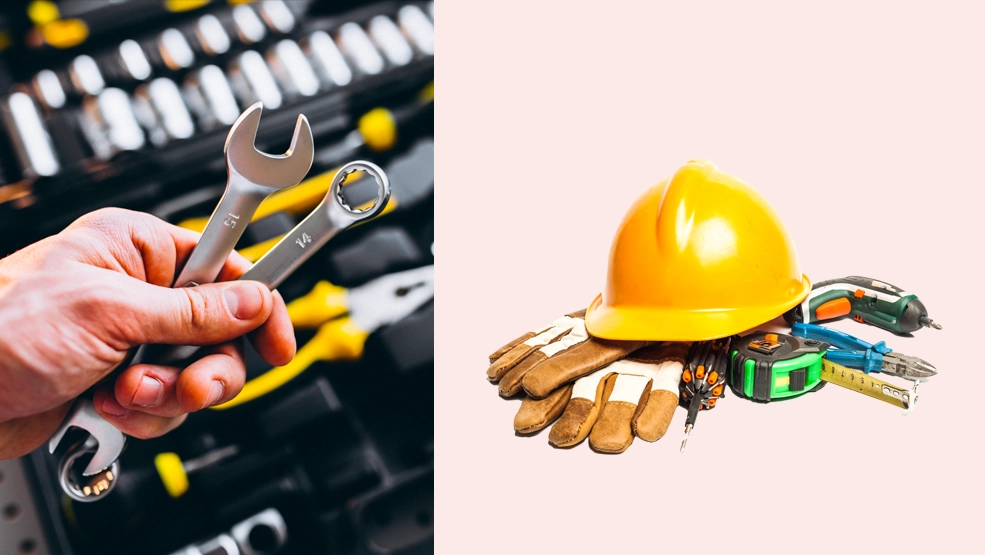In a world of relentless deadlines and increasing demands, downtime is an enemy that no business can afford to face. Equipment failures can bring operations to a grinding halt, draining resources and disrupting overall productivity.
Imagine your production line coming to a halt because of a machine breakdown. You are losing money by the minute, your employees are frustrated, and you may have even started losing your customers.
This scenario may sound scary, but you don’t have to worry. By shifting your approach and adopting practices that will minimize unforeseen breakdowns, you can empower your business—you can thrive. In this article, we will guide you through equipment maintenance management, from strategies to success. Let’s get started.
What is Equipment Maintenance Management?
Equipment maintenance management is a set of systematic processes that encompasses planning, organizing, and executing maintenance activities. These processes ensure the optimal performance and longevity of machinery, tools, and other assets.
By implementing effective equipment maintenance management practices, businesses can proactively address potential issues, prevent equipment failures, and maximize productivity.
Need for Equipment Maintenance Management
1. Minimizing Downtime
Imagine the chaos created when a piece of equipment breaks suddenly. Downtime brings operations to a halt, resulting in missed deadlines and frustrated customers.
Regular maintenance is important if you are to minimize unforeseen breakdowns. By conducting routine inspections and addressing potential issues before they can escalate, organizations can reduce the risk of unexpected equipment failures and the subsequent cost of downtime that accompanies them.
2. Extending Equipment Lifespan
Equipment is a significant investment for any organization. Proper maintenance practices contribute to extending the lifespan of the equipment. By ensuring that regular cleaning, lubrication, and repairs take place, organizations can ensure that equipment operates efficiently and lasts longer; by valuing the investment made in the equipment, organizations can maximize their return on investment by preventing any unnecessary wear and tear and reducing the frequency of replacements.
3. Enhancing Safety
Safety is paramount in any workplace. Faulty machinery poses a risk to employees, leading to potential accidents and injuries. Well-maintained equipment helps to sustain a safe working environment for employees.
Maintaining equipment involves overseeing various aspects, such as inspections, repairs, cleaning, and servicing. You can’t miss any of these aspects if you want to minimize downtime and extend your equipment lifespan.
By identifying and addressing potential hazards through regular maintenance, organizations can significantly reduce the risk of accidents caused by faulty machinery. Not only does this protect the employees, but it also shields the organization from legal and financial liabilities.
4. Cost Savings
Maintenance plays a crucial role in both optimizing equipment performance and preventing unnecessary expenses caused by equipment failure. By diligently maintaining your equipment, you not only ensure its outstanding performance but also save a significant amount of money in the long run.
Promptly addressing issues helps prevent major failures that require extensive repairs or equipment replacements. Additionally, regular maintenance reduces the risk of potential breakdowns and cuts down the associated costs
Types of Equipment Maintenance
1. Preventive Maintenance
Preventive maintenance is the proactive approach that aims to keep equipment in optimal condition by conducting regular inspections, cleaning, and servicing. It’s like giving your machinery a check-up to catch potential issues before they turn into significant problems.
This approach involves regularly scheduled inspections, cleaning, and servicing to prevent equipment failure and maintain optimal performance. By following preventive maintenance, organizations can identify potential issues early on, take corrective measures, and prevent breakdowns that could disrupt operations before they happen.
2. Reactive Maintenance
Despite the best efforts, equipment failures still occur. When they do, reactive maintenance comes to the rescue. Also known as “breakdown maintenance,” this approach involves fixing equipment after a failure has occurred. While reactive maintenance is unavoidable, failing to minimize its occurrence will result in increased downtime and higher repair costs. By focusing on preventive measures, organizations can minimize equipment failures and the amount of reactive maintenance and repair they are forced to perform.
3. Predictive Maintenance
Imagine if you had a crystal ball that could tell you about equipment failures before they actually happened. Well, predictive maintenance comes pretty close to that. Leveraging data analysis and technology, predictive maintenance aims to identify potential failures by monitoring equipment condition and performance. By collecting data from sensors, equipment monitoring systems, and historical records, organizations can detect patterns that indicate potential failures. This enables maintenance to be scheduled before there is a problem, reducing downtime and optimizing the return on investment.
4. Proactive Maintenance
Prevention is good, but being proactive is even better. Proactive maintenance goes beyond preventive measures by focusing on identifying and addressing underlying issues that could impact equipment performance in the future.
Proactive maintenance focuses on identifying and addressing underlying issues that could impact equipment performance in the future. It involves analyzing equipment data, conducting root cause analysis, and implementing corrective actions to optimize efficiency and prevent significant failures. Proactive maintenance ensures that equipment operates at its full potential and reduces the risk of unexpected issues arising.
5. Design Out Maintenance
Imagine a world where equipment is so well-designed that maintenance becomes almost obsolete. Design out maintenance aims to create just that by emphasizing improving equipment design and manufacturing processes to minimize the need for maintenance and enhance reliability. By addressing root causes and implementing design enhancements, organizations can create robust equipment that requires minimal maintenance. This approach reduces downtime, improves overall reliability, and lowers maintenance costs by reducing the frequency of repairs or replacements.
5 Equipment Maintenance Management Best Practices for Optimal Performance
1. Inventory Your Equipment
To effectively manage equipment maintenance, start by creating a comprehensive inventory of all your equipment. Capture essential details such as make, model, age, and maintenance history. This inventory management provides valuable insights for maintenance planning and resource allocation. It allows you to prioritize maintenance tasks based on severity, and identify equipment that may require replacement or upgrades, and optimize resource utilization. By having a clear overview of your available assets, you can make informed decisions and streamline maintenance efforts.
2. Select an Appropriate Maintenance Strategy
Not all equipment requires the same maintenance approach. Based on factors such as equipment criticality, complexity, and business objectives, choose the maintenance strategy that makes the most sense. It may involve a combination of preventive, predictive, and proactive maintenance approaches tailored to your organization’s specific needs. By aligning your maintenance strategy with the equipment’s requirements and business goals, you can optimize maintenance efforts for improved performance. Remember, a one-size-fits-all approach rarely works in equipment maintenance management.
3. Establish Schedules
Consistency is key in equipment maintenance. Develop a well-defined maintenance schedule that outlines routine inspections, servicing, and necessary repairs. Adhering to a consistent maintenance schedule ensures that tasks are carried out in a timely manner, minimizing the risk of equipment failures and downtime. Regular inspections and preventive measures become routine, reducing the likelihood of major breakdowns and associated costs. Additionally, establish clear communication channels to ensure that all stakeholders are aware of the maintenance schedule and any changes or updates.
4. Automate the Process with a Software Solution
Embrace the power of technology and leverage equipment maintenance management software solutions like Zuper. These advanced tools streamline maintenance workflows, automate task assignments, and provide real-time updates. Adopting equipment maintenance management software enables organizations to track activities, generate reports and analytics, and make informed decisions regarding resource allocation and maintenance priorities. By automating processes, organizations can improve efficiency, reduce human error, and enhance the overall effectiveness of their maintenance management efforts.
5. Train Your Team
Equip your service team with the necessary knowledge and skills to carry out maintenance tasks effectively. Regular training sessions and workshops ensure that the team stays updated with the latest practices, safety protocols, and technological advancements.
Training enhances their ability to diagnose equipment issues, perform maintenance tasks correctly, and leverage new tools or technologies. A well-trained team is essential for maintaining equipment at its peak performance and ensuring the overall success of the maintenance management strategy. It also fosters a culture of continuous improvement and empowers employees to take ownership of their roles in equipment maintenance.
Equipment Maintenance Checklist
Visual Inspection:
- Check for any signs of damage, wear, or corrosion on equipment components.
- Ensure all safety guards, covers, and protective devices are in place.
Lubrication:
Follow the manufacturer’s guidelines for lubrication intervals and types of lubricants.
- Apply lubricants to moving parts to reduce friction and ensure smooth operation.
Cleaning:
- Remove any dirt, debris, or contaminants from equipment surfaces.
- Use appropriate cleaning agents and tools to maintain cleanliness.
Calibration:
- Regularly calibrate equipment to ensure accurate readings and measurements.
- Follow calibration procedures recommended by the manufacturer or industry standards.
Electrical Components:
- Inspect electrical connections for signs of loose wires or damaged insulation.
- Test electrical components and circuits for proper functionality.
Fluid Levels:
- Check fluid levels, such as oil, coolant, hydraulic fluid, or fuel, as per the manufacturer’s guidelines.
- Top up or replace fluids as necessary to maintain optimal levels.
Filters:
- Inspect and clean or replace filters, such as air filters or fuel filters, to ensure proper filtration and prevent contamination.
Belts and Chains:
- Check belts and chains for signs of wear, tension, or misalignment.
- Adjust or replace belts and chains as needed to maintain proper operation.
Safety Devices:
- Test and verify the functionality of safety devices, such as emergency stop buttons or safety interlocks.
- Repair or replace any faulty safety devices promptly.
Record-Keeping:
- Maintain detailed records of maintenance activities, including dates, tasks performed, and any issues identified.
- Keep track of equipment maintenance history for future reference and analysis.
It is important to note that this checklist provides general guidelines, and specific equipment may have unique maintenance requirements. Always refer to the manufacturer’s recommendations and follow industry best practices when performing equipment maintenance.
Conclusion
Effective equipment maintenance management is essential for organizations aiming to achieve optimal performance, minimize downtime, and reduce costs. By implementing a well-structured maintenance plan, including schedules and the appropriate type of maintenance, organizations can ensure the smooth operation of their critical assets.
By adopting a strategic maintenance management approach, organizations can unlock the potential of their equipment, maximize operational efficiency, and achieve long-term success. With Zuper, a robust field service management software platform, you can streamline workflows, automate task assignments, and gain real-time insights for informed decision-making. Schedule a demo today and discover how Zuper can revolutionize your equipment maintenance management.






